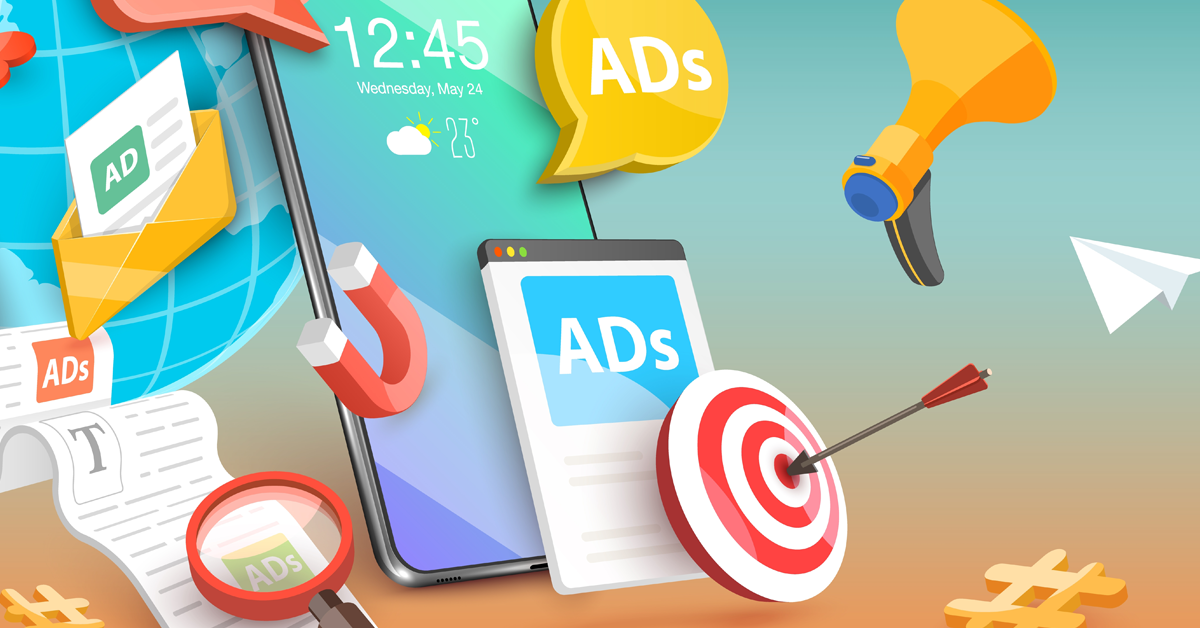The Definitive Guide to A/B Testing Digital Ads in 2025
A/B testing remains the cornerstone of data-driven advertising optimization, but the methodology has evolved significantly in recent years. As digital advertising platforms become more sophisticated and privacy concerns reshape tracking capabilities, mastering advanced A/B testing techniques is more crucial than ever for advertising success.
This comprehensive guide will walk you through everything you need to know about effective A/B testing in 2025’s digital advertising landscape.
Why A/B Testing Matters More Than Ever
In an era of rising advertising costs and increased competition, systematic testing provides several critical advantages:
- Eliminates guesswork by replacing opinions with data
- Provides concrete evidence of what resonates with your audience
- Continuously improves performance through incremental gains
- Reduces waste by identifying underperforming elements
- Builds institutional knowledge that informs future campaigns
Industry data shows that advertisers who implement structured testing programs typically achieve 15-30% better performance than those who rely on intuition or sporadic testing.
A/B Testing Fundamentals: The Scientific Method for Advertising
The Basic Framework
At its core, effective A/B testing follows a scientific approach:
- Observation: Analyze current performance and identify opportunities
- Question: Formulate specific questions about what could improve
- Hypothesis: Create testable predictions about specific changes
- Testing: Implement controlled experiments to test hypotheses
- Analysis: Evaluate results with statistical rigor
- Conclusion: Draw insights based on data
- Iteration: Apply learnings and begin the process again
Common Testing Mistakes to Avoid
Before diving into advanced techniques, let’s address the most frequent testing pitfalls:
- Testing too many variables simultaneously
- Concluding tests before statistical significance
- Ignoring external factors that influence results
- Setting up improper control groups
- Misinterpreting statistical data
- Failing to document testing methodology and results
Setting Up Proper A/B Tests: The Technical Foundation
Platform-Specific Testing Capabilities
Modern advertising platforms offer varied testing capabilities:
Google Ads:
- Experiment campaigns (formerly campaign experiments)
- Ad variation testing
- Custom experiments for landing pages
- Performance Planner for budget testing
Meta Ads:
- A/B testing tool in Ads Manager
- Split testing for different optimization goals
- Dynamic creative optimization testing
- Conversion lift studies
Other Platforms:
- Microsoft Ads experiments
- TikTok split testing
- LinkedIn A/B testing
- Native testing tools on emerging platforms
Creating a Testing Infrastructure
Before running your first test, establish these essentials:
- Testing calendar to schedule experiments
- Documentation system to track hypotheses and results
- Statistical significance calculator appropriate for your metrics
- Standardized naming conventions for test elements
- Reporting templates to communicate results consistently
Developing Effective Testing Hypotheses
The most valuable tests begin with well-formulated hypotheses that:
- Address specific elements that can be isolated
- Are based on existing data or established principles
- Make clear predictions about expected outcomes
- Are measurable through available metrics
- Connect to meaningful business outcomes
Hypothesis Framework Template
Strong hypotheses follow this structure:
“By changing [specific element] from [current version] to [test version], we expect to see [predicted outcome] because [reasoning], which will impact [business metric] by approximately [estimated impact].”
Example: “By changing our call-to-action button from ‘Learn More’ to ‘Get Your Free Quote’, we expect to see a 15-20% increase in click-through rate because it creates clearer value and urgency, which will impact conversion volume by approximately 10-15%.”
What to Test: Prioritizing for Maximum Impact
High-Impact Testing Elements
While you can test virtually anything, focus first on elements with the greatest potential impact:
Creative Elements:
- Headlines/primary messages (typically 25-50% impact on CTR)
- Images/video thumbnails (20-40% impact)
- Calls to action (15-30% impact)
- Value propositions (20-35% impact)
Targeting Elements:
- Audience segments (can have 50%+ impact on conversion rates)
- Placements and platforms (30-50% impact on performance)
- Dayparting and scheduling (10-25% impact)
Bidding & Budget Elements:
- Bidding strategies (15-40% impact on efficiency)
- Budget allocation (10-30% impact on overall results)
- Campaign optimization goals (20-40% impact)
Landing Page Elements:
- Page layout and design (15-30% impact on conversion rates)
- Form length and design (20-50% impact)
- Social proof placement (10-25% impact)
- Offer presentation (25-45% impact)
The PIE Prioritization Framework
To decide what to test first, score potential tests using the PIE framework:
- Potential: How much improvement can you reasonably expect?
- Importance: How valuable is the traffic affected by this test?
- Ease: How complex is implementation and analysis?
Score each factor from 1-10 and calculate an average to prioritize your testing roadmap.
Advanced Testing Methodologies
Sequential vs. Parallel Testing
Sequential Testing: Running tests one after another
- Pros: Clearer results, no interaction effects, simpler analysis
- Cons: Slower, subject to time-based external factors
Parallel Testing: Running multiple tests simultaneously
- Pros: Faster results, more efficient
- Cons: Potential interaction effects, more complex analysis
Best practice: Use parallel testing for unrelated elements across different campaigns and sequential testing for closely related elements within a single campaign.
Multi-Variate Testing (MVT)
MVT tests multiple variables simultaneously to understand interaction effects.
When to use MVT:
- When you need to understand how elements interact
- When you have sufficient traffic for complex analysis
- When optimizing multiple elements of a single experience
Sample MVT structure: Test combinations of 2 headlines × 2 images × 2 CTAs = 8 total variations
Bandit Testing Approaches
Traditional A/B testing allocates traffic evenly, but bandit algorithms dynamically adjust traffic based on performance.
Benefits of bandit testing:
- Reduces opportunity cost by favoring better-performing variations
- Automatically adjusts for changing conditions
- Maximizes conversions during the testing period
When to use: For short-term campaigns where learning is less important than immediate performance.
Statistical Significance: Ensuring Valid Results
Understanding Confidence Levels
Statistical significance tells you how confident you can be that results aren’t due to random chance.
For digital advertising tests, aim for:
- 95% confidence level for major strategic decisions
- 90% confidence level for tactical optimizations
- 80% confidence level for exploratory tests
Sample Size Requirements
Determining the right sample size before testing is crucial:
| Expected Effect | Conversion Rate | Required Sample Size (95% confidence) |
|---|---|---|
| 5% improvement | 1% | ~150,000 visitors per variation |
| 5% improvement | 5% | ~30,000 visitors per variation |
| 10% improvement | 1% | ~38,000 visitors per variation |
| 10% improvement | 5% | ~8,000 visitors per variation |
| 20% improvement | 1% | ~10,000 visitors per variation |
| 20% improvement | 5% | ~2,000 visitors per variation |
Tools for Significance Calculation
- Google Optimize calculator
- CXL significance calculator
- AB Testguide calculator
- R or Python statistical libraries for advanced analysis
Interpreting Test Results Correctly
Beyond Binary Winners and Losers
Sophisticated analysis looks deeper than simple win/loss outcomes:
- Segment your results by audience characteristics
- Analyze secondary metrics beyond the primary KPI
- Look for trends over time rather than just aggregate data
- Consider confidence intervals not just point estimates
- Question unexpected results and look for explanations
Common Misinterpretations
Avoid these analytical errors:
- Ignoring small but consistent gains (5% improvements compound over time)
- Stopping tests too early based on initial trends
- Ignoring external factors that might influence results
- Assuming correlation equals causation without proper controls
- Overlooking segment-specific impacts that balance out in aggregate
Advanced Testing Strategies for 2025
Automated Creative Testing
Leverage platform-provided tools for efficient creative testing:
- Google’s Responsive Search Ads (automatically test headline/description combinations)
- Meta’s Dynamic Creative Optimization (test component combinations)
- TikTok’s Creative Testing Tool (compare multiple creative approaches)
Implementation tip: Provide 8-10 headlines, 4-5 descriptions, and multiple images to give automation sufficient creative options while maintaining brand consistency.
Intent-Based Testing
Modern testing accounts for user intent signals:
- Search query segmentation - Test different messages for different query types
- Behavioral intent signals - Customize tests based on user behaviors
- Sequential funnel testing - Test different messages at each journey stage
Example framework: Develop separate tests for:
- Problem-aware users (educational content focus)
- Solution-aware users (comparison-focused content)
- Product-aware users (specific feature highlights)
- Most-aware users (offer and social proof emphasis)
Multi-Platform Testing Matrix
Create a comprehensive testing program across platforms:
| Platform | Primary Test Focus | Secondary Focus | Measurement Approach |
|---|---|---|---|
| Google Search | Headlines & CTAs | Landing pages | Direct conversion tracking |
| Meta Ads | Creative concepts | Audience segments | Attribution modeling |
| Display/Video | Visual appeal | Message framing | View-through analysis |
| Subject lines | Offer structure | Controlled holdout groups |
Implementation: Creating Your Testing Roadmap
90-Day Testing Plan Template
Create a structured plan following this framework:
Month 1: Foundation Testing
- Week 1-2: Headline/core message testing
- Week 3-4: Primary image/creative concept testing
Month 2: Audience & Targeting Refinement
- Week 5-6: Audience segment performance testing
- Week 7-8: Landing page layout testing
Month 3: Offer & Conversion Path Optimization
- Week 9-10: Call-to-action and offer testing
- Week 11-12: Form/conversion process testing
Documentation Framework
For each test, document:
- Test hypothesis and rationale
- Variations being tested
- Success metrics and targets
- Sample size requirements
- Test duration estimates
- Results and statistical significance
- Insights and recommended next steps
- Estimated business impact
Case Study: Comprehensive Testing Transformation
A mid-sized e-commerce company implemented systematic A/B testing with remarkable results:
Starting point:
- $500,000 monthly ad spend
- 2.1% conversion rate
- $32 average cost per acquisition
90-day testing program:
- Creative testing: Identified messaging that increased CTR by 28%
- Audience testing: Found segments with 3x higher conversion rates
- Landing page testing: Increased page conversion by 45%
- Offer structure testing: Improved AOV by 15%
End results:
- Same $500,000 monthly ad spend
- 3.8% conversion rate (+81%)
- $18.50 average cost per acquisition (-42%)
- $1.3M additional monthly revenue
Common A/B Testing Questions
How long should I run each test?
Tests should run until reaching statistical significance or for at least one full business cycle (often 2 weeks minimum) to account for day-of-week effects.
How many variations should I test at once?
For most tests, limit to 3-5 variations to balance learning speed with statistical reliability.
Should I test big changes or small optimizations?
Begin with larger conceptual tests to establish direction, then optimize incrementally once you’ve found a winning approach.
How do I test when I have limited traffic?
Focus on:
- Testing higher in the funnel where traffic is greater
- Testing larger changes that might show bigger impacts
- Extending test duration to accumulate sufficient data
- Reducing the number of variations being tested
Conclusion: Building a Testing Culture
The most successful digital advertisers don’t just run occasional tests—they build testing into their organizational DNA:
- Make testing a regular process, not a special event
- Share testing results widely across the organization
- Reward data-driven decision making over opinion-based choices
- Build a test library that documents all historical tests
- Apply learnings across channels and campaigns
By implementing the methodologies in this guide, you’ll create a sustainable competitive advantage through systematic improvement, helping your advertising performance consistently outpace competitors who rely on assumptions rather than evidence.
What elements of your digital advertising are you planning to test next? Share your testing priorities in the comments below!




